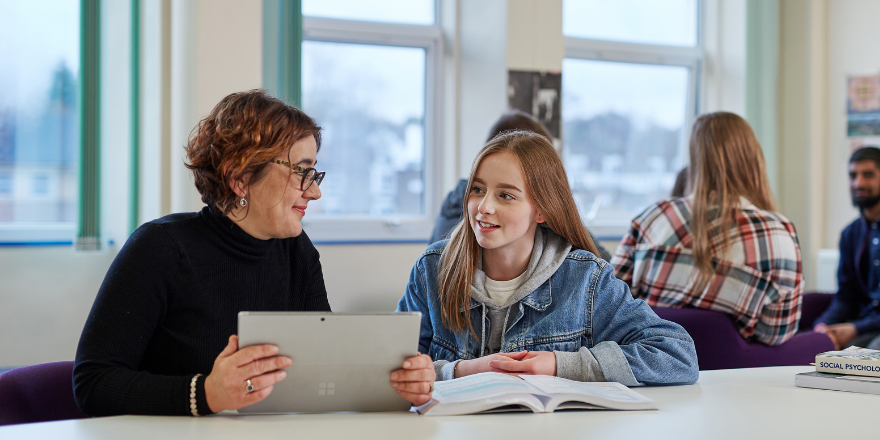
At the recent Times Higher Education Digital Universities conference, I attended events and talks around how we can make teaching and learning more digitally inclusive and more engaging. As I listened, my internal voice kept saying ‘yes, we do that’. That wasn’t coming from a place of arrogance, more a place of humility, on the assumption that the way we design our teaching and learning isn’t rocket science. So, when I was asked to consider writing a piece for their publication ‘Campus’, I thought ‘why not?’. Here's a short(ish) summary of that article.
Like many educational institutions, Leeds Trinity University were keen to learn the lessons from the swift pivot to online learning during Covid. Thematic analysis of focus group data conducted at Leeds Trinity University in 2020/21 highlighted the importance of developing connections and digital social spaces. Barriers experienced in relation to these were the inconsistent presentation and resourcing of the virtual learning environment (VLE) and inconsistent expectations of what students needed to do in relation to learning. This feedback became the foundation for an institutional wide reform of our VLE, our teaching delivery and the interface between these aspects of learning.
Students expressed difficulties navigating the varying layouts of VLE pages. Not only did the formatting of the VLE space change between modules, but there was also vast variation in the quantity of learning resources and how these were ‘packaged’.
In response, the University rolled out a VLE page template that was both consistent across all modules and purposefully designed for active engagement, with carefully scaffolded resources. Mindful of the variance in colleagues’ digital skills and confidence, we focused on using simple technologies and a basic digital skill set that would have a high impact in terms of student engagement and depth of learning. The reformed VLE space also incorporated our blended approach to learning where in-person synchronous teaching is book-ended by asynchronous online activities (Pre-Live-Post model or PLP). Each week’s learning on the VLE page contains a clearly labelled, scaffolded set of resources with clear guidance on the time taken to engage with these.
Feedback from a student-led VLE audit was universally positive for the layout and structure of the module pages. Students commented on:
- Consistent structure
- Ease of navigation
- Clear and accessible information
- Friendly, accessible language
- Clearly set tasks with expectations and guidance
Regarding our PLP model, students were positive if activities:
- Were relevant and engaging
- built upon in the live session
- enhanced their understanding
- extended their learning beyond the classroom
- were manageable in terms of time and challenge
- were released in a timely way
- were clearly communicated
Feedback on blended delivery was reflected in University-wide staff discussions. Staff liked the structure of the PLP model and the principles of it linking into live sessions, but experienced issues structuring and delivering live sessions which were predicated on engagement with the pre-activities.
Rolling out a consistent VLE space helped students engage with their learning. Embedding the PLP model within these spaces helped ensure students were prepared to engage during on-campus learning. However, online activities within the VLE space need to be; consistently signposted with clear descriptions and instructions; purposefully designed with varied activities for active engagement; scaffolded both within the module and through the levels; differentiated, supporting weaker students and extending more able students; and related to differentiation, have compulsory and optional tasks.
Access to clearly designed digital spaces and purposefully scaffolded resources has been a positive takeaway from that rapid pivot to online teaching in 2020. There are still challenges ahead, but within these are opportunities that will benefit us all.
The full version of Alison’s article for Campus can be found here.
Alison Torn is an Associate Professor (Learning & Teaching) at Leeds Trinity University.